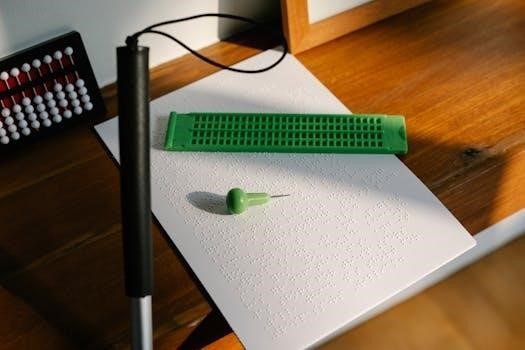Monster File Formats
These files are often ASCII tab-delimited, containing data without headers or footers. Another format is the Netscape Cookie format, with each cookie on a single line in a text file. Plain text format is also used, with a token separator between entries.

ASCII Tab Delimited Format
This format represents a structured way of storing monster data within a file. It uses the ASCII character set, ensuring broad compatibility across different systems and software. The key characteristic of this format is the use of tabs as delimiters, which separate different data fields within a single row. Each row typically corresponds to a unique monster entry, with its attributes organized into columns. This means that the file lacks headers or footers, focusing purely on the raw data. This approach is efficient for machine parsing because it’s a straightforward text-based structure, making it easy to import and process the information without needing complex parsing rules. The data, therefore, is usually structured in a simple table-like manner, with each line containing specific information. It is very important that this format is easy for computers to read and process for data analysis or manipulation.
Netscape Cookie File Format
This specific format is used to store cookie data, and when used for monster data, it adapts the structure to fit each monster entry. Each monster is represented as a single line of text in a file, mimicking the way cookies are stored in browsers. This line contains various attributes of the monster, following the format conventions of a cookie file. Specifically, each line would contain the monster’s name, size, and other relevant statistics and information, separated by delimiters such as tabs or commas. The file is a simple text file, typically with a `.txt` extension, making it easy to open and inspect. The single line per entry structure simplifies data extraction and processing. While not its original intended use, this format provides a compact and workable way to store monster data, particularly if the monster data structure is similar to cookie data. This use case shows the format’s flexibility and adaptability.
Plain Text Format
The plain text format for monster files offers a simple, human-readable way to store data. In this format, each monster’s information is structured in a way that is easily interpreted by both machines and people. Typically, a distinct separator, such as a specific token or string (e.g., “STOP”), is used to distinguish between different monster entries within the file. Monster attributes, like name, size, and stats, are typically arranged sequentially, often separated by spaces, tabs, or commas, making it easy to parse. A key advantage of plain text is its accessibility; it can be viewed and edited using any basic text editor. However, while straightforward, this format can be less structured compared to more complex formats like JSON or XML, potentially making it harder to handle large or very complex datasets. This makes the plain text format suitable for smaller, simpler datasets or when direct human editing is needed. Its simplicity allows for easy debugging and manual data manipulation.

Monster File Usage
These files facilitate data interaction in ChassisSim. They are also used in D&D 5e statblock generation and implement significant functionality within systems. These files enable multiple, non-cohesive functionalities, making them versatile for various tasks.
Data Interaction in ChassisSim
One of the most powerful aspects of ChassisSim is its ability to interact with external data sources, and this capability is primarily facilitated through the use of monster files. These files serve as a crucial bridge, enabling the seamless integration of various datasets into the simulation environment. This interaction allows users to manipulate and analyze complex systems based on real-world parameters and measurements. The monster file format, typically an ASCII tab-delimited structure, provides a structured way to organize and import the necessary information. This allows for the efficient transfer of data, which is critical for the accurate representation of physical models in the simulation. Furthermore, this interaction enables users to dynamically update simulation parameters and incorporate new data sets, ensuring that the simulation environment is always up-to-date and relevant. The system can utilize data to change the behavior of the simulation, creating a flexible and powerful tool for analysis and design. The modular nature of the monster file interface ensures that data can be added or removed as required, streamlining the simulation workflow and maximizing efficiency.
D&D 5e Statblock Generation
Monster files play a significant role in the generation of D&D 5e statblocks. These files encapsulate all the necessary attributes of a creature, such as its name, size, armor class, hit points, and various other statistics. These files are then used by statblock generators, which present the data in a standardized format that is familiar to D&D players. The typical format for these statblocks is often utilized to ensure easy readability and compatibility with D&D resources. This allows for the seamless transfer of monster information from the file to the statblock. Usually these files include every characteristic needed for a creature in the game. This allows for easy integration into tools that will generate the statblocks. The information is generally structured so that it can be parsed by different applications. This makes it possible to create a variety of tools based on the same data source. The ability to import monster data from files allows for a more efficient and customized way to prepare encounters, and it makes the process of creating new monsters much simpler.
Functionality Implementation
Monster files often serve as a crucial component in systems, implementing substantial functionalities. A single monster file is capable of handling numerous, diverse, and non-cohesive tasks within a software system. These files can single-handedly implement large blocks of functionality, demonstrating their versatility. This approach allows for a modular design where a single file can drive many features. The usage of monster files simplifies development by making it easier to implement complex behaviors. This is especially useful for systems that require diverse sets of operations. The files act as a central repository for a given module’s logic, making them easier to maintain and update. This modularity also makes it possible to reuse functionality in different contexts. The ability of a single file to handle multiple functionalities reduces the complexity of the code base. This also improves code organization and reduces the amount of code that needs to be written.

Monster File Handling
Handling these files involves converting extensions, such as changing ‘.monster’ to ‘.txt’ for text editing; Actions also include merging, converting, and securely erasing files to prevent data recovery, ensuring file management.
File Extension Conversion
Monster files, often associated with specific applications, may require extension conversion for broader accessibility. The typical extension “.monster” can be misleading, as different programs utilize this extension for varied purposes, so knowing the originating program is key. A common conversion involves changing the extension to “.txt,” allowing the file to be opened and viewed with any standard text editor. This is particularly useful since many monster files are stored in plain text formats. This conversion does not alter the underlying data within the file; it simply changes how the operating system interprets it. However, it’s important to note that while the file may now be readable, the original program might not be able to interpret it after the extension is altered. This is because the program is looking for files with the specified extension. This conversion process is critical to access and manipulate information within these files. Therefore, caution is advised to avoid data loss, and the user should be sure to use a program for the correct extension.
File Merging and Conversion
The process of merging and converting monster files is frequently encountered when dealing with multiple sources of data. This usually involves combining data from several files into one comprehensive file or transforming the file into a different format. Merging might be necessary to consolidate information from various databases or game files, creating a unified resource. Conversion, on the other hand, might be required to make the data compatible with different software applications or data analysis tools. Often, specialized scripts or software tools are used for this task, as manual merging and conversion can be time-consuming and error-prone. These tools can parse different file formats and extract the necessary data, and then re-structure it into the desired format. For example, a script might convert a tab-delimited file to a JSON format, or it might combine multiple text files into a single larger file. Therefore, it is essential to ensure that these processes are done correctly to prevent data loss or corruption. So, careful planning is crucial for successful merging and conversion.
Secure File Erasure

Secure file erasure is a crucial process when dealing with sensitive monster data, especially if it contains proprietary or confidential information. Simply deleting a file does not remove it from the storage medium; the data remains recoverable using specialized tools. Secure erasure, therefore, involves overwriting the data multiple times with random patterns, making it unrecoverable. Software tools designed for secure file erasure are available, and they use different algorithms to ensure the complete removal of data. These tools are especially useful when you are discarding old storage devices or sharing devices with others. They provide a peace of mind when it comes to data security. Different algorithms exist for secure file erasure, some more effective than others. The choice of an algorithm often depends on the sensitivity of the data and the level of security needed. It is very important to use such tools when dealing with monster data, especially if it contains sensitive information. Without using them, you risk a data breach.



































